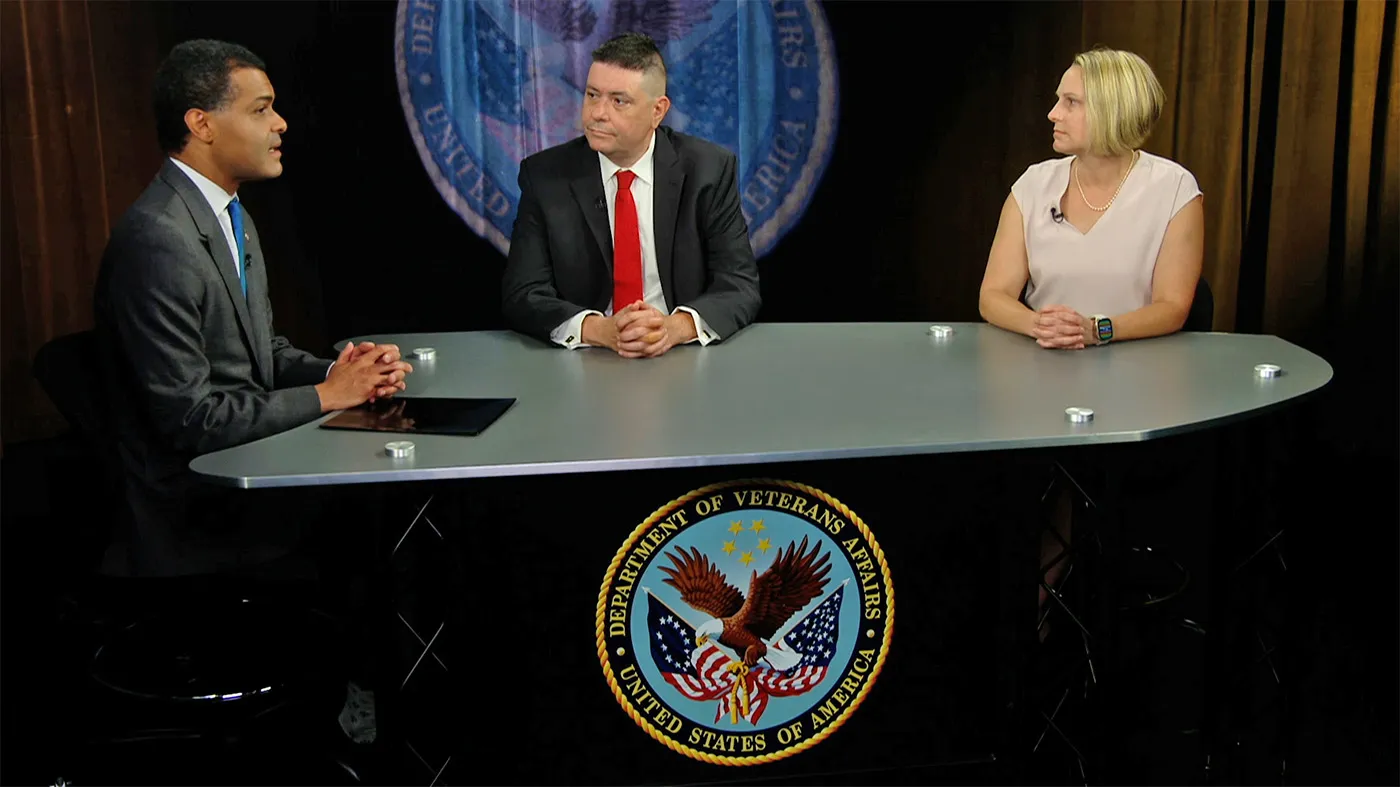A new VA study finds a strong link between PTSD symptom severity and anxiety sensitivity among female Veterans who have experienced military sexual trauma. The researchers say treating the anxiety problem may be a way to ease core PTSD symptoms.
Anxiety sensitivity reflects a fear of physical sensations that accompany anxiety. A person with high levels of anxiety sensitivity may misinterpret normal bodily sensations, such as a racing heart in some situations, as an indicator of heart problems. Someone with low anxiety sensitivity would likely regard this sensation as uncomfortable but non-threatening.
The results appeared in the journal Military Psychology in September 2021.
Dr. Chelsea Ennis, a clinical psychologist at the Southeast Louisiana Veterans Health Care System, led the study. She and her colleagues examined the connection between anxiety sensitivity and PTSD symptom severity in a group of female Veterans with a history of military sexual trauma. The Veterans volunteered for the study. Although the link between anxiety sensitivity and PTSD has been well-established, the researchers determined that anxiety sensitivity had not been studied among women who’ve experienced military sexual trauma.
Reducing anxiety sensitivity can reduce PTSD symptoms
PTSD is characterized by various symptoms grouped together due to their similarity, with four known clusters:
- Intrusion (nightmares, distressing memories)
- Avoidance (of people, places, or things that remind one of a traumatic event)
- Negative thoughts and emotions (beliefs that the world is dangerous, a lack of positive emotions)
- Arousal (hypervigilance, exaggerated startle).
The researchers found that anxiety sensitivity was strongly related to two of the clusters–arousal and reactivity, and negative changes in cognition and mood—but not to intrusion and avoidance. “Given the [treatable] nature of [anxiety sensitivity], future research should examine the extent to which targeting this cognitive-behavioral construct reduces PTSD symptoms among such samples,” Ennis and her team write.
A growing body of research is showing that brief psychological treatments designed to combat myths regarding the danger of physical symptoms of anxiety, coupled with repeated exposure to these sensations, can lead to reductions in anxiety sensitivity, according to Ennis. Interoceptive exposure, which is based on getting someone used to the physical sensations of anxiety, is one such treatment.
“For example, for someone who really fears their heart is racing because they’re worried that they’re going to have a heart attack, we may have them run in place over and over again to get them used to that physical sensation,” Ennis said. “Or for someone who feels like they get really nervous when their breathing changes … when they’re anxious, we may have them hyperventilate over and over again to show them that there’s no danger in hyperventilating and that nothing bad happens.”
`People with PTSD have panicky feelings’
Interoceptive exposure, Ennis notes, is mainly used as a treatment for panic disorder because anxiety sensitivity is strongly linked to panic disorder. It could be used as a complementary treatment to medication or one of the trauma-focused psychotherapies VA uses to treat patients with PTSD—cognitive processing therapy or prolonged exposure.
“Importantly, research has shown that reducing a person’s anxiety sensitivity can, in turn, reduce his or her PTSD symptoms,” she added.
Dr. Ariel Lang is a clinical psychologist at the VA San Diego Healthcare System who specializes in anxiety- and trauma-related disorders. She’s not surprised about the strong link in Ennis’ research between anxiety sensitivity and the PTSD symptom clusters of arousal and negative thoughts.
“Anxiety sensitivity is when you’re afraid of your own anxiety-related physical sensations,” Lang explained. “It drives people who have panic disorder and is super-common in PTSD, because people with PTSD have these panicky feelings. When something terrible happens to you, your body’s fight-or-flight response kicks in, and you get this rush of fear.”
More Information
Click here to read the full story.
Click here to learn more about VA research.
Topics in this story
More Stories
Diverse representation of women in health care research allows MVP to make discoveries for women’s health
Join the Million Veteran Program online. You will have the option to receive an at-home blood sample collection kit in the mail.
VHA's new podcast series, New Horizons in Health, features a candid discussion of psychedelic assisted therapies for Veterans experiencing mental health conditions.







I have struggled with PTSD from MST since 1978. It was witnessed by 4 coworkers. I escaped him and reported the incident to the watch supervisor. I was told to forget it and go back to work. The man continued his actions against me until he transferred. I finally could no longer deal with the nightmares and anxiety and sought help. The VA was helpful at first but it eventually faultered. After being assaulted at that VA I had to quit my job because I could no longer handle the continued behavior against me. No wonder my care feel apart, the men in charge still don’t want to admit to criminal male behavior in the military and at the VA. Unfortunately I doubt they ever will.
We could have told you that. Here’s the question WTF is the VA gonna do with this information? I’ll tell you little to nothing, that is what the VA always does with MAST
Well, dah. How long did it take you space cadets to figure that one out?